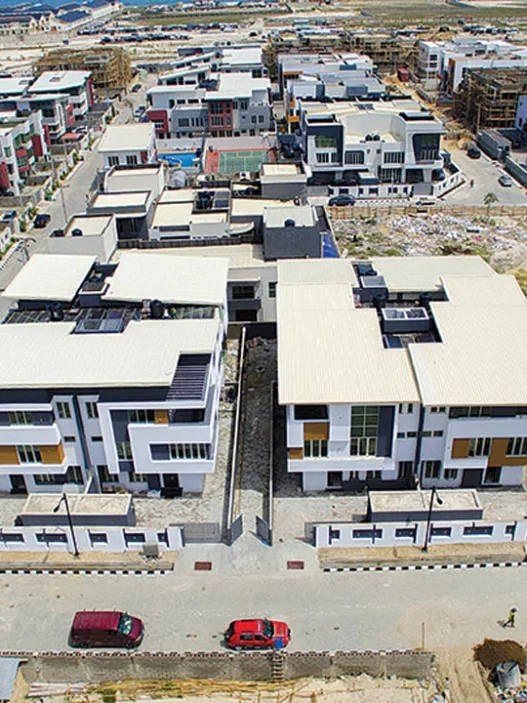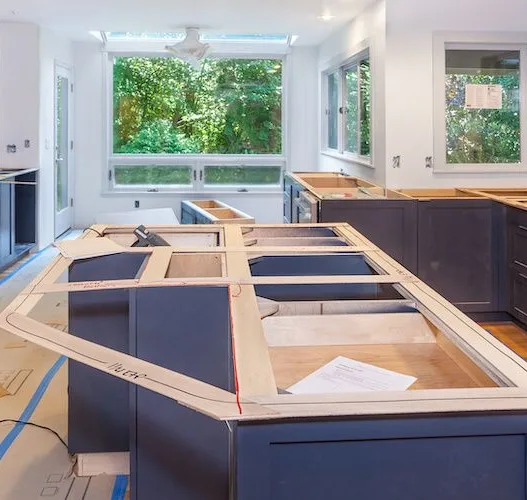Fix and flip loans are a unique type of financing designed specifically for real estate investors who want to purchase, renovate, and then sell properties for a profit. These loans are an essential tool in the world of real estate investment, enabling investors to secure quick financing for properties that need significant repairs or updates. Unlike traditional home loans, fix and flip loans are short-term, often covering only the time it takes to buy, renovate, and sell the property.
Why consider fix and flip loans? For those looking to enter the lucrative world of house flipping, fix and flip loans provide the necessary capital to purchase and improve properties quickly. These loans allow investors to take advantage of real estate opportunities that might otherwise be out of reach due to the immediate need for funds. Whether you’re a seasoned investor or a newcomer, understanding how to fix and flip houses can unlock the potential for substantial profits.
The Basics of Fix and Flip Loans

Understanding the fundamentals of fix and flip loans is important for anyone looking to succeed in the house-flipping business. These loans differ significantly from conventional mortgages and come with their own set of rules, benefits, and challenges.
Short-Term Loans
Fix and flip loans are primarily short-term loans, typically ranging from six months to one year. This short-term nature aligns with the goal of house flipping, where the objective is to purchase, renovate, and sell the property as quickly as possible. The short duration helps investors avoid long-term financial commitments and focus on the immediate goal of selling the property for a profit.
The quick turnaround in house flipping means that long-term financing isn’t necessary. Investors need just enough time to fix up the property and find a buyer, making a short-term loan ideal for this type of project. This aspect of fix and flip loans is crucial for anyone learning how to fix and flip houses effectively.
Interest Rates
Interest rates for fix and flip loans are generally higher than traditional mortgages. This is because these loans are considered riskier by lenders due to the short-term nature and the uncertainty of the renovation process. Investors can expect interest rates ranging from 8% to 12% or even higher, depending on the lender and the borrower’s creditworthiness.
Why are the rates higher? The elevated interest rates reflect the higher risk involved in short-term real estate investments. Lenders need to protect themselves against the potential of the property not selling within the expected timeframe or the renovations exceeding the initial budget. Understanding the interest rates associated with fix and flip loans is essential for calculating potential profits and managing the overall project budget.
Repayment Terms
Repayment terms for fix and flip loans are often more flexible than traditional mortgages, with many lenders offering interest-only payments during the renovation phase. This allows investors to keep their monthly payments low while they focus on improving the property. The full repayment of the principal is typically due once the property is sold.
Why flexible terms? The flexibility in repayment terms is designed to accommodate the unique nature of house flipping. Since the primary goal is to sell the property quickly, lenders are often willing to offer terms that align with the investor’s cash flow needs during the renovation period. This flexibility is a key advantage when working with fix and flip lenders.
Types of Fix and Flip Loans
There are several types of fix and flip loans available, each with its own advantages and disadvantages. Understanding these options can help investors choose the best loan for their specific needs.
Hard Money Lenders
Hard money lenders are private individuals or companies that offer fix and flip loans secured by the property itself. These loans are known for their fast approval process and flexible terms, making them a popular choice among real estate investors.
Advantages
- Quick approval and funding, often within a few days.
- Flexible terms and less stringent requirements compared to traditional lenders.
- Suitable for properties that need significant repairs.
Disadvantages
- Higher interest rates, often ranging from 10% to 15%.
- Shorter loan terms, typically six months to a year.
- May require a larger down payment or more equity in the property.
Hard money loans are ideal for experienced investors who need quick access to capital and are confident in their ability to complete the project on time. However, the high costs associated with these loans can eat into profits, so it’s essential to weigh the pros and cons carefully when considering hard money lenders.
Private Money Lenders
Private money lenders are individuals or small groups who lend money for real estate investments. These lenders are often family members, friends, or business associates who are interested in earning a higher return on their investment.
Advantages
- Personalized terms and potentially lower interest rates.
- Greater flexibility in loan terms and repayment schedules.
- Potentially easier to negotiate with compared to institutional lenders.
Disadvantages
- Can be harder to find reliable private lenders.
- May require a strong personal relationship or track record.
- Risk of damaging personal relationships if the investment doesn’t go as planned.
Private money lenders can be an excellent option for those who have strong connections within their network and can negotiate favorable terms. However, the personal nature of these loans means that they must be handled with care to avoid potential conflicts.
Traditional Lenders
Traditional lenders, such as banks and credit unions, may also offer fix and flip loans, although they tend to have stricter requirements and a longer approval process.
Advantages
- Potentially lower interest rates compared to hard money lenders.
- More regulated and established lending process.
- Access to larger loan amounts for more significant projects.
Disadvantages
- The longer approval process often takes several weeks.
- Stricter credit and financial requirements.
- Less flexibility in loan terms and repayment options.
For those who qualify, traditional lenders can offer competitive rates and terms, making them an attractive option for investors who plan to flip higher-value properties. However, the more rigorous application process and stricter requirements may not be suitable for all investors.
Factors to Consider When Choosing a Fix and Flip Loan
Choosing the right fix and flip loan involves careful consideration of several key factors. These factors will determine not only the cost of the loan but also its suitability for your specific project.
Interest Rates
Interest rates can vary significantly between different lenders and types of loans. Comparing rates from various fix and flip lenders is essential to ensure that you’re getting the best deal possible. Remember that while a lower interest rate may seem appealing, it’s important to consider the overall loan terms and fees as well. Higher interest rates can significantly impact your profitability, especially if the renovation process takes longer than expected. By shopping around and comparing rates, you can reduce your borrowing costs and increase your potential returns.
Loan Terms
The length of the loan term and any prepayment penalties are crucial factors to consider when choosing a fix and flip loan. Shorter terms may result in higher monthly payments, while longer terms could increase the total interest paid over the life of the loan.
Aligning the loan term with your project timeline is critical for managing cash flow and ensuring that you can repay the loan on time. Prepayment penalties, which are fees charged for paying off the loan early, should also be considered, as they can add to your overall costs.
Fees
Upfront fees, closing costs, and other charges can add up quickly, so it’s important to factor these into your decision when choosing a loan. Some lenders may charge points (a percentage of the loan amount) in addition to other fees, which can increase the overall cost of the loan.
Why it matters: Understanding the total cost of the loan, including fees, is essential for accurately budgeting your project. These costs can vary widely between lenders, so it’s important to compare them carefully to avoid any surprises.
Lender Reputation
The reputation and experience of the lender are also important considerations. Working with a reputable lender who has experience in the fix and flip market can make the process smoother and more predictable.
A lender with a strong track record and positive reviews is more likely to offer reliable service and support throughout the loan process. Checking reviews, seeking recommendations, and doing your due diligence can help you choose a lender who will be a valuable partner in your real estate investment journey.
Best Options for Fix and Flip Loans
When it comes to selecting the best fix and flip loan, the right choice will depend on your individual needs, the specifics of your project, and your level of experience in the real estate market. Here’s a closer look at the most common options.
Hard Money Lenders
Hard money lenders remain a popular choice for fix and flip investors due to their quick approval process and flexibility. They are particularly well-suited for projects that require fast financing and for investors who are comfortable with higher interest rates in exchange for quick access to funds.
Experienced investors who need quick capital and can manage the higher costs associated with these loans. If you know how to fix and flip houses and have a proven track record, hard money lenders can be an excellent option
Private Money Lenders
Private money lenders offer a more personalized approach, often with more flexible terms and potentially lower interest rates. However, finding a reliable private lender can be challenging, and the relationship aspect can add a layer of complexity.
Investors with strong personal connections who can negotiate favorable terms. If you have a network of potential private lenders and can establish trust, this option can be highly advantageous.
Traditional Lenders
For those who qualify, traditional lenders offer the potential for lower interest rates and more structured loan terms. However, the longer approval process and stricter requirements mean this option may not be suitable for every project.
Investors with strong credit and financials who are flipping higher-value properties. If you meet the qualifications, traditional lenders can offer competitive rates and terms that make them a solid choice for certain projects.
Tips for Obtaining a Fix and Flip Loan
Securing a fix and flip loan requires careful preparation and attention to detail. Here are some tips to help you successfully obtain the financing you need for your next house-flipping project:
- Maintain a Strong Credit Score
A good credit score is essential when applying for any type of loan, including fix and flip loans. Lenders use your credit score to assess your creditworthiness, and a higher score can help you secure better terms and lower interest rates.
Regularly check your credit report for errors and work on improving your credit score by paying down debt, making payments on time, and avoiding new credit inquiries before applying for a loan.
- Develop a Detailed Business Plan
Lenders want to see that you have a clear and realistic plan for your project. This includes a budget, timeline, and strategy for selling the property. A well-thought-out business plan demonstrates your understanding of the market and your ability to execute the project successfully.
Include detailed estimates for renovation costs, expected sale price, and a backup plan in case the property takes longer to sell than anticipated.
- Apply to Multiple Lenders
Shopping around and applying to multiple lenders can help you find the best terms and rates for your fix and flip loan. Different lenders may offer varying loan amounts, interest rates, and fees, so it’s important to compare your options.
Don’t just focus on interest rates; consider the overall cost of the loan, including fees and repayment terms, to determine the best option for your needs.
- Build Relationships with Lenders
Building a strong relationship with lenders can make it easier to secure financing for future projects. Lenders who know you and have worked with you in the past may be more willing to offer favorable terms and quick approvals.
Stay in regular contact with your lenders, provide updates on your projects, and demonstrate your reliability by meeting all your obligations on time.
Conclusion
Fix and flip loans are a vital tool for real estate investors looking to capitalize on the opportunities in the housing market. These loans provide the necessary funding to purchase, renovate, and sell properties quickly, allowing investors to turn a profit. However, choosing the right loan and lender is crucial to the success of your project.
Understanding the basics of fix and flip loans, including their short-term nature, higher interest rates, and flexible repayment terms, is the first step in making informed decisions. By considering factors like interest rates, loan terms, fees, and lender reputation, you can find the best financing option for your needs.
Whether you choose to work with hard money lenders, private money lenders, or traditional lenders, each option has its own set of advantages and challenges. Careful planning, a strong credit score, and a detailed business plan will help you secure the financing you need to succeed in the competitive world of house flipping.
Remember, the key to success in fixing and flipping houses lies in preparation, flexibility, and choosing the right financial partners. By following these guidelines and tips, you’ll be well on your way to achieving your real estate investment goals.
Get the best of Real Estate delivered straight to your inbox weekly.
Real Estate updates the way you want it.























